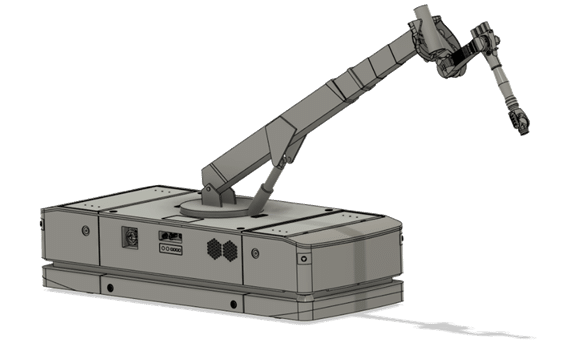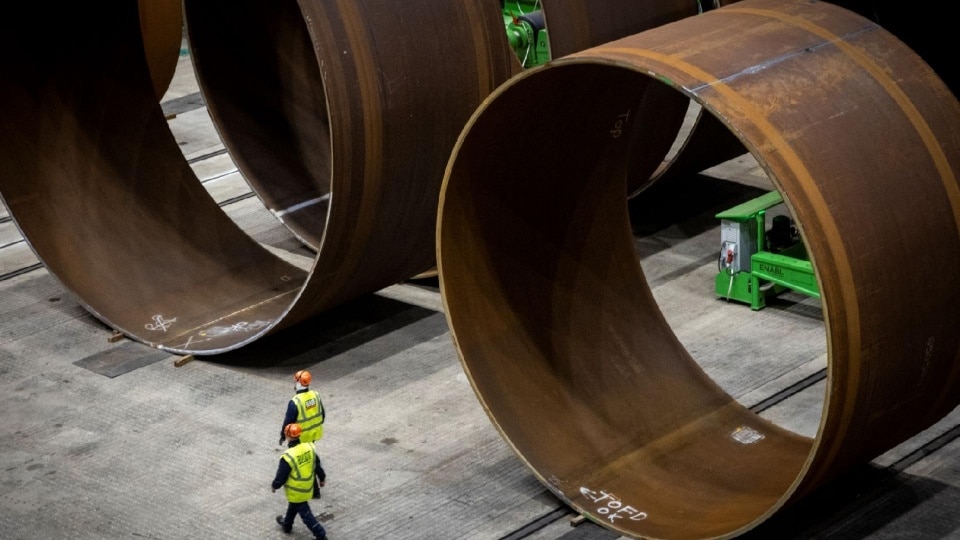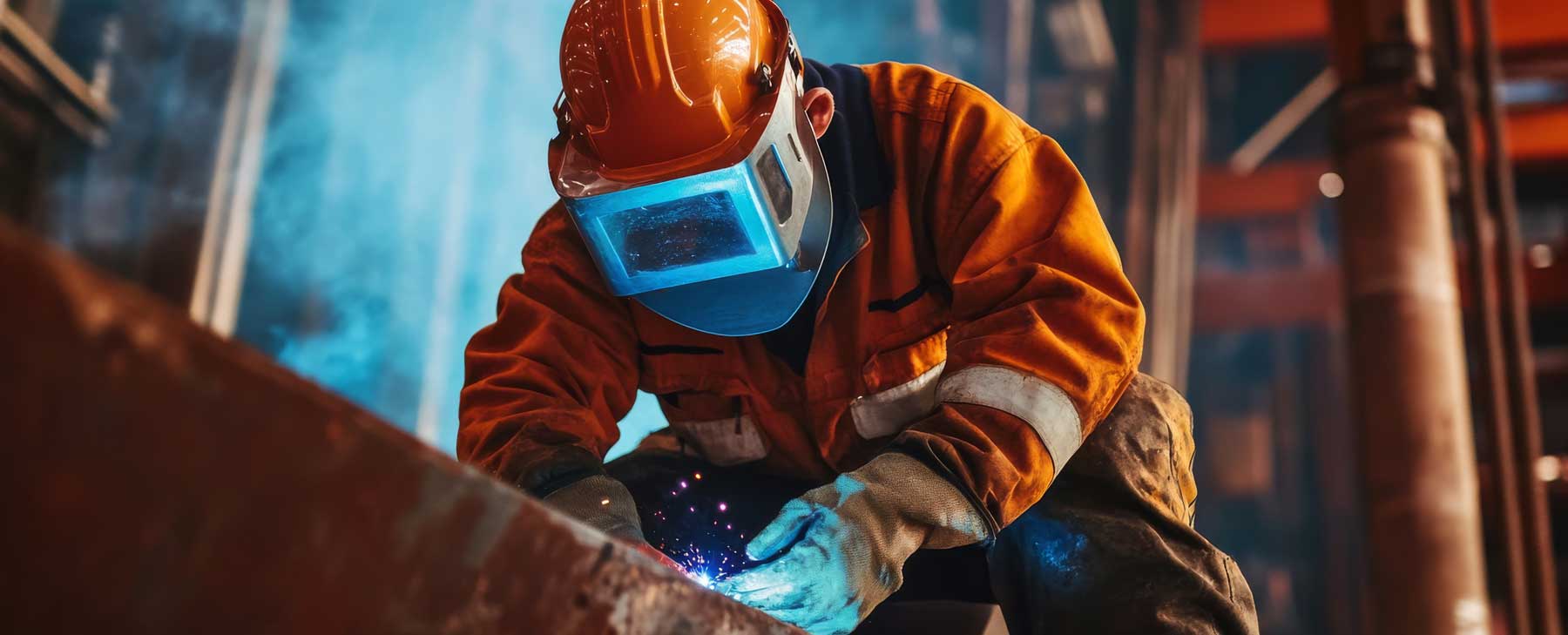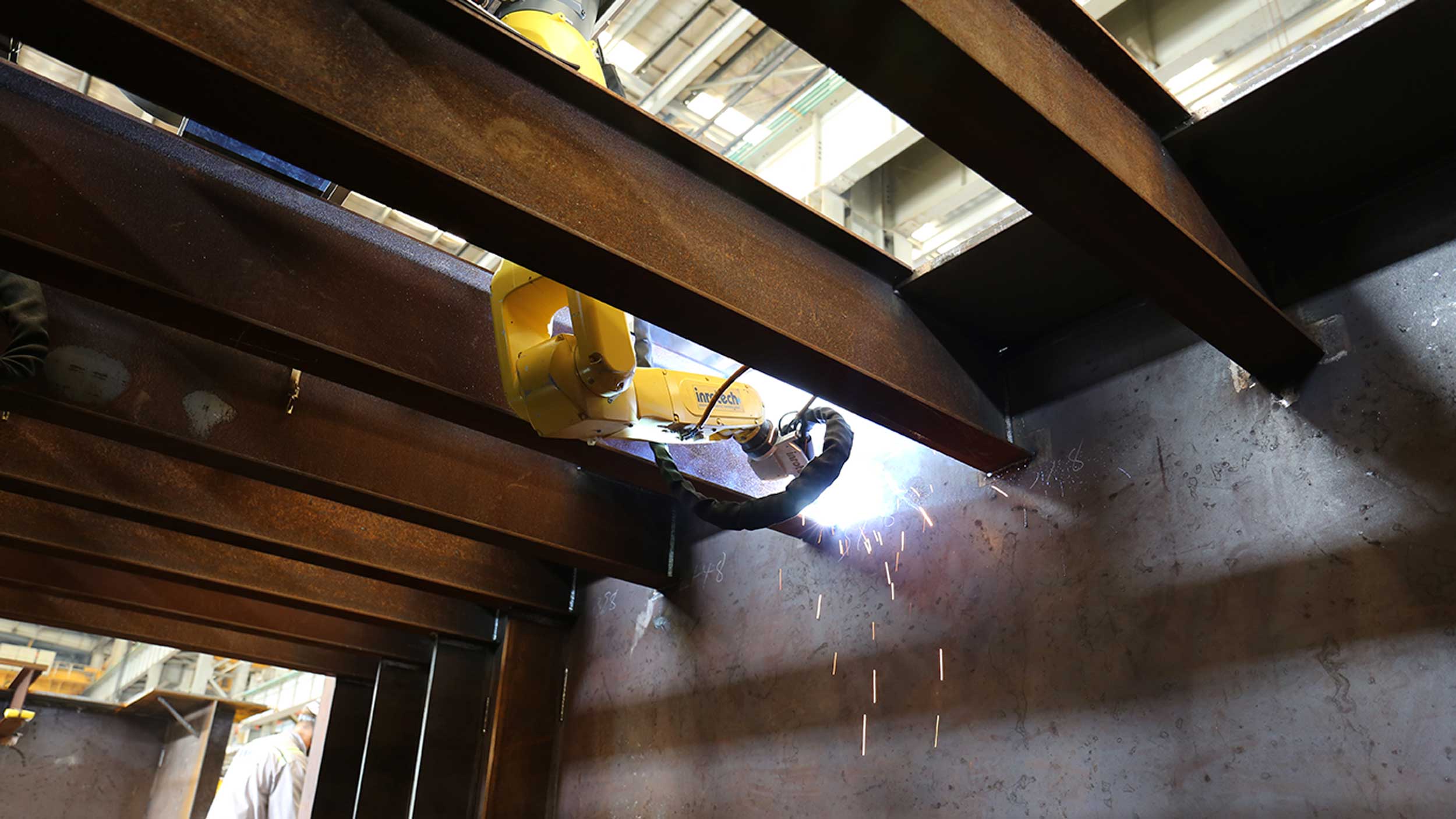A new research project, – the Center for Large Structure Production (LSP) at the University of Southern Denmark (SDU) has received a grant of just over DKK 13 million to develop a mobile robot crane that, among other things, can be used to weld large wind turbine foundations.
Towards year 2050, 10,000 of the largest wind turbines must be perpendicular in the North Sea, – as a minimum. Denmark, the Netherlands, Belgium and Germany made the decision last year. Conventional offshore wind turbines must stand on foundations on the seabed, and when the demand for the turbines increases, an unlimited number of larger foundations needs to be manufactured. This explains the significantly increase in demand of the production capacity.
The researchers at SDU’s Center for Large Structure Production (LSP), together with their partners, intend to do something about the lack of production capacity. To support this project, they have received 13.3 million DKK from the Danish Energy Agency’s development pool, EUDP.
Lack of welders
The researchers from SDU, in collaboration with Inrotech and Bladt industries, will develop a new type of robot that can weld at 15, 20 and perhaps even up to 50 meters in height.“There is a need for such a welding solution”, says Bladt Industries, “because we experience a massive shortage of welders in offshore wind”. “We find it difficult to get enough qualified labour, and that is why we have to automate as much as we possibly can. There will still be a need for skilled blacksmiths and welders in the future, but we won’t achieve our goals without investing in welding automation”, says Nis Hansen, lead welding engineer at Bladt Industries. “Furthermore, we don’t have the facilities to develop and test new technologies as we need to use all our current space we have for production. This is also why we are so happy to be part of this project”, adds Henrik Victor Hansen, Factory Manager at Bladt Industries.
Crucial for the green transition
“The new robot will be able to make the production of wind turbine foundations both faster and cheaper and thus become an important piece in the green transition” says Hans Jørgen Brodersen from Energy Cluster Denmark. “In the green energy transition, it is urgent to reduce the time from project idea to production and initiate huge scale-up, which is needed if we are to reach the goal of climate and energy efforts” adds Hans Jørgen Brodersen. Energy Cluster Denmark is involved in the project as a cluster organization for the energy sector, just as Odense Robotics is for the robotics industry. “If we succeed in developing and deploying large automated mobile robot solutions with multitools that can weld with precision, and assemble mega-structures such as wind turbine towers, foundations and the large energy plants, we can better cope with both the scale-up and the time horizon we are working towards”, says Hans Jørgen Brodersen.
Model-based control system
“But developing the robot will not be an easy task” explains Professor Christian Schlette from SDU.He is the head of LSP, which focuses on automating the production of large constructions, including wind turbines and ships, using robotic technology. “Welding may look rough and simple, but it is in fact a very precise piece of work. It doesn’t get easier if you are 15, 20 or 50 meters up in the air, because structures and cranes move at that height”, says Christian Schlette.

The robot will therefore consist of a mobile platform at the bottom. On top of it comes a crane, and on the top of the crane sits a robotic arm with a welding tool. In this way, there are three moving parts which can compensate for both own movements and movements in the steel structures.
“But of course, this requires that the three parts are synchronized” adds Christian Schlette. “The only way we can do that is by making a model-based control system based on a mathematical model of how the materials and all the parts behave, which we then add into the robot, so it knows in advance if something moves in a certain way, and it consequently must react in a certain way.
Possibilities of use
“There are already welding robots that can weld large structures high above the ground. However, there are several challenges with these types of solutions”, says Christian Schlette. “The existing solutions are very large and therefore also very expensive. For example is welding tools placed on gantry cranes or on lifting towers. Often, they are also made specifically for one type of product or task, and they are fixed in a certain place.
Our new platform will be mobile and can be used in several different places” adds the professor. He is supported by Thomas Bøgner, Sales Manager at Inrotech: “We are proud to be part of this exciting project with SDU. Inrotech have long experience with welding technologies that automatically plans the full welding process: number of passes, location of each pass and the appropriate welding parameters, given the allowed heat-input window, the groove geometry and the welding position. Such welding knowledge will notoriously be applicable in this project”.
However, the robot will also be able to be used for many other things than just welding. “You can put all sorts of other tools on the robot and, for example, use it to paint, grind or cut, not just in the energy sector, but also in the construction industry”, says Christian Schlette. The goal is for the robot to be finished and ready for use when the research project is completed in 3.5 years by the end of 2026.





